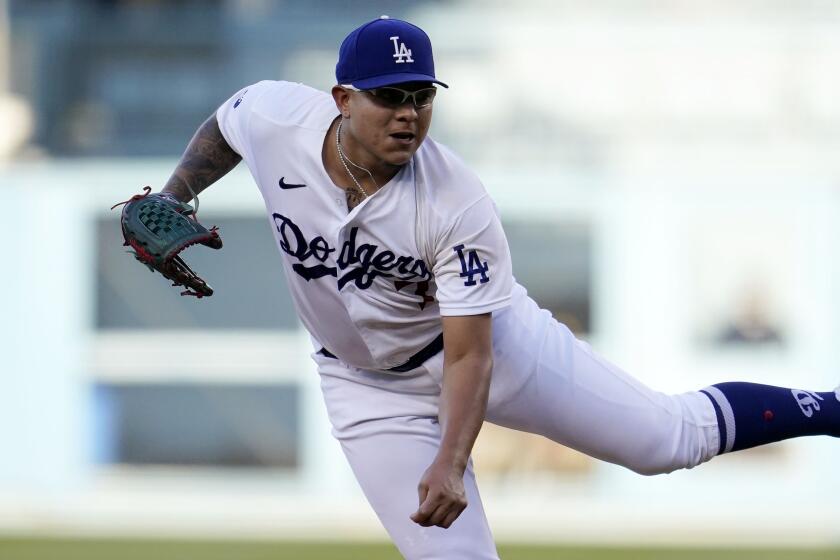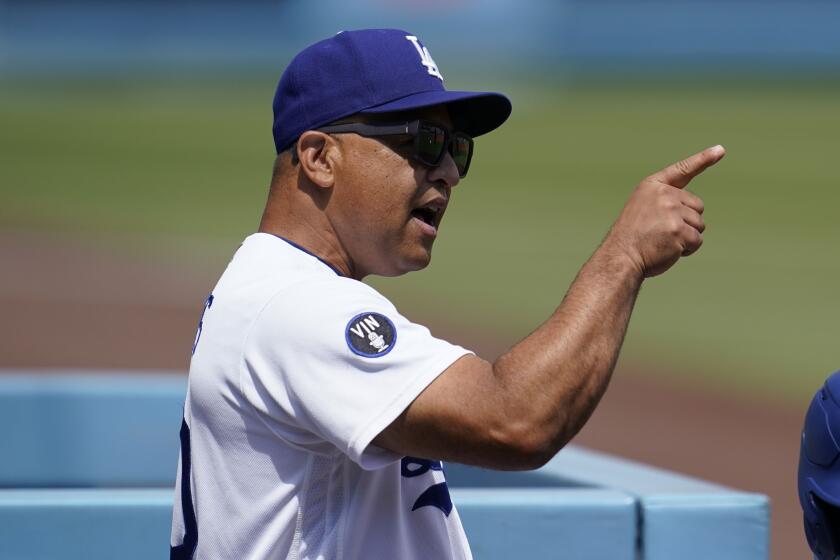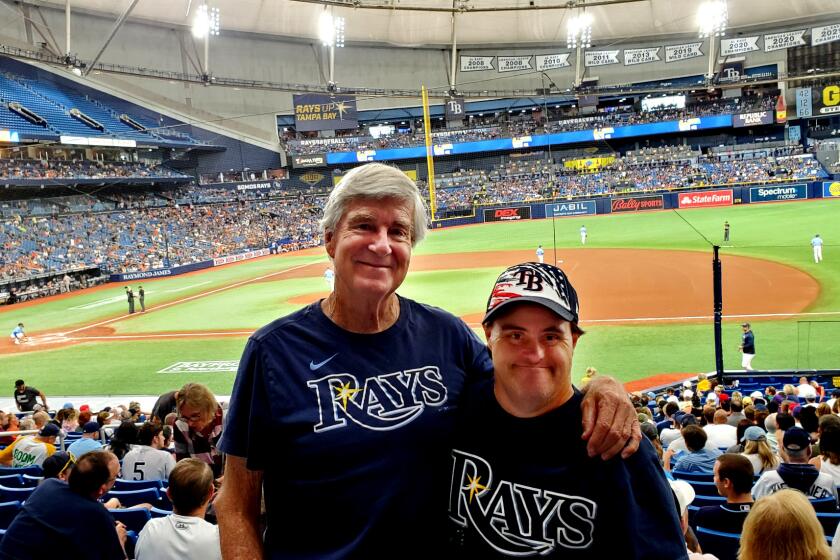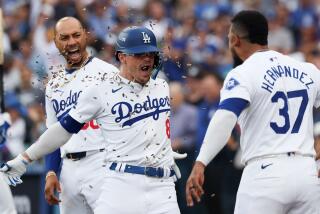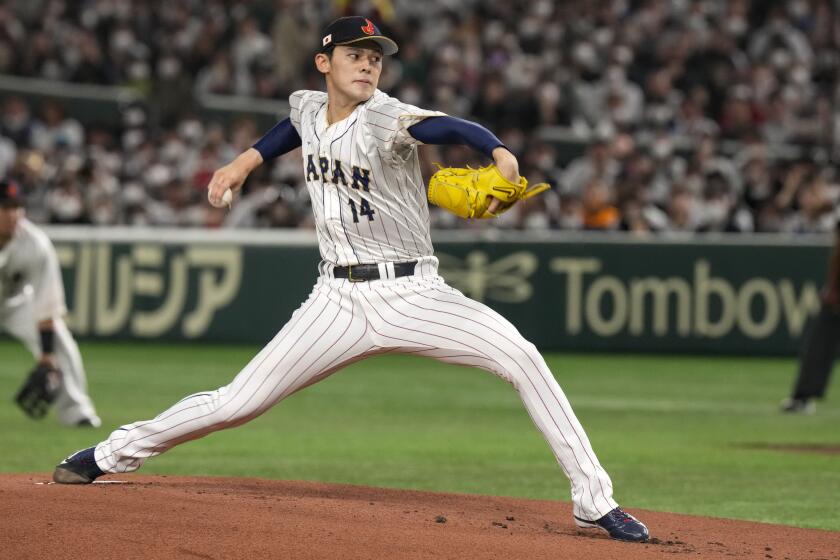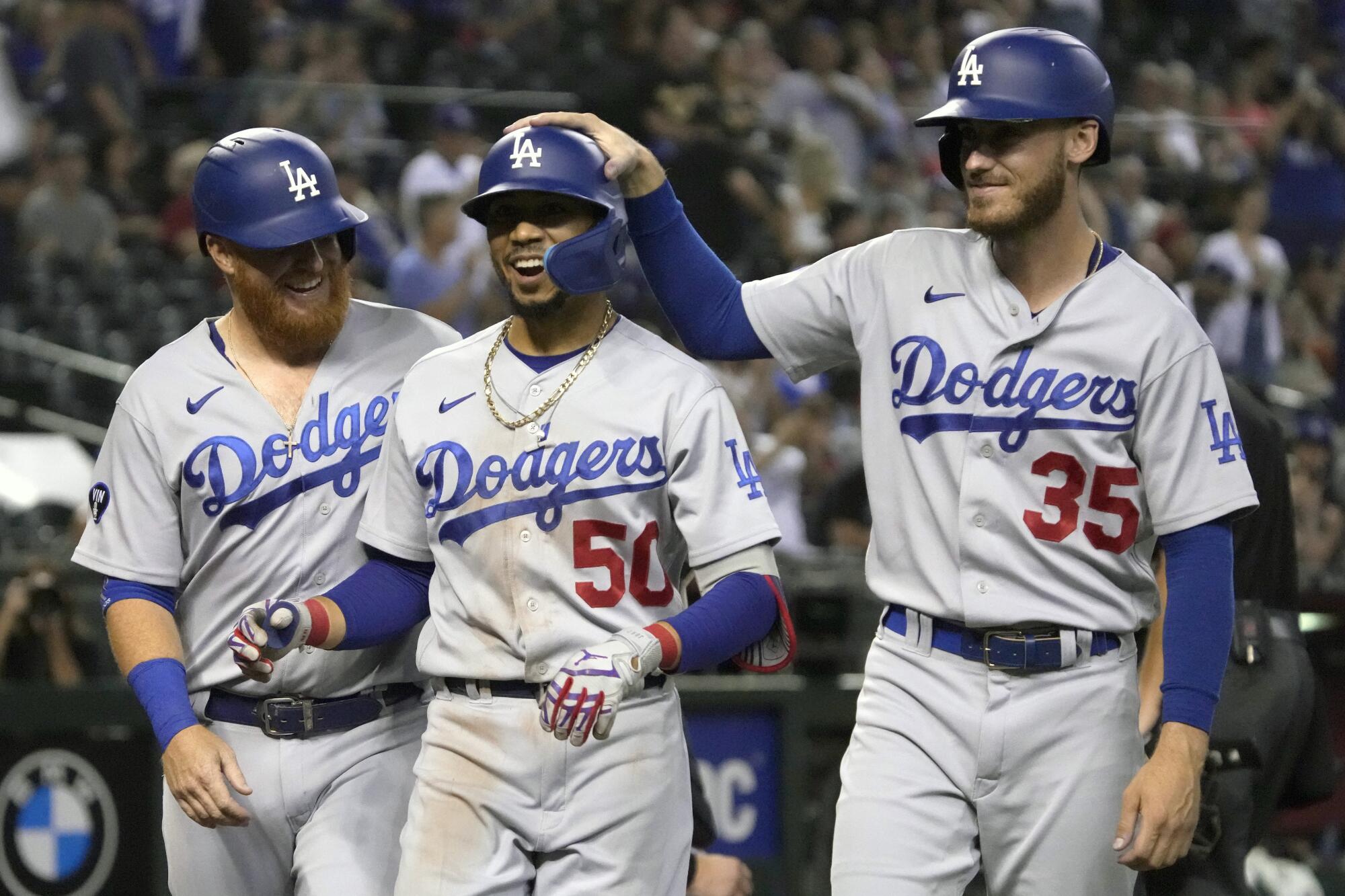
The most important 15 minutes of the day happen hours before first pitch.
Thatâs when, home or road, day or night, opposing ace or patchwork bullpen game awaiting them on the mound, every member of the Dodgers lineup will gather in the batting cages near their clubhouse.
Theyâll sit in a group, study-session style.
And theyâll start to talk â about that gameâs pitcher, about their plan of attack and about how to raise the bar for baseballâs best offense a little higher.
Hittersâ meetings like this are standard around baseball, a daily staple of life in the majors.
Whatâs different with the Dodgers is the way they go about it.
Every day, itâs the players who talk first â and, often, the most.
Julio UrĂas has had a stellar season for the Dodgers and he deserves to be in the conversation with Miamiâs Sandy Alcantara for the NL Cy Young award.
Each right-handed hitter will explain their past experiences against a particular pitcher, their expectations for that nightâs at-bats and what they plan to do when they step in the box.
The left-handed hitters will do the same.
The teamâs three hitting coaches will wait until the end, making sure the conversation stays on the right track, and offering suggestions where they see fit, but not interfering with what has become the most collaborative effort most hitters in the Dodgersâ star-studded lineup say theyâve ever experienced.
âTheyâre letting it be player-led,â Justin Turner said.
âIt holds everyone accountable, if weâre all talking about something,â Max Muncy added.
âItâs a group, a collective effort,â said Freddie Freeman. âI just feel like itâs been such a great process over the course of the year.â
It has certainly been reflected in the results.
The Dodgers led the majors in scoring at 5.23 runs per game. Since the 1950s, only once has a Dodgers team scored more over a full season, and that was in 2019 when the baseballs were juiced.
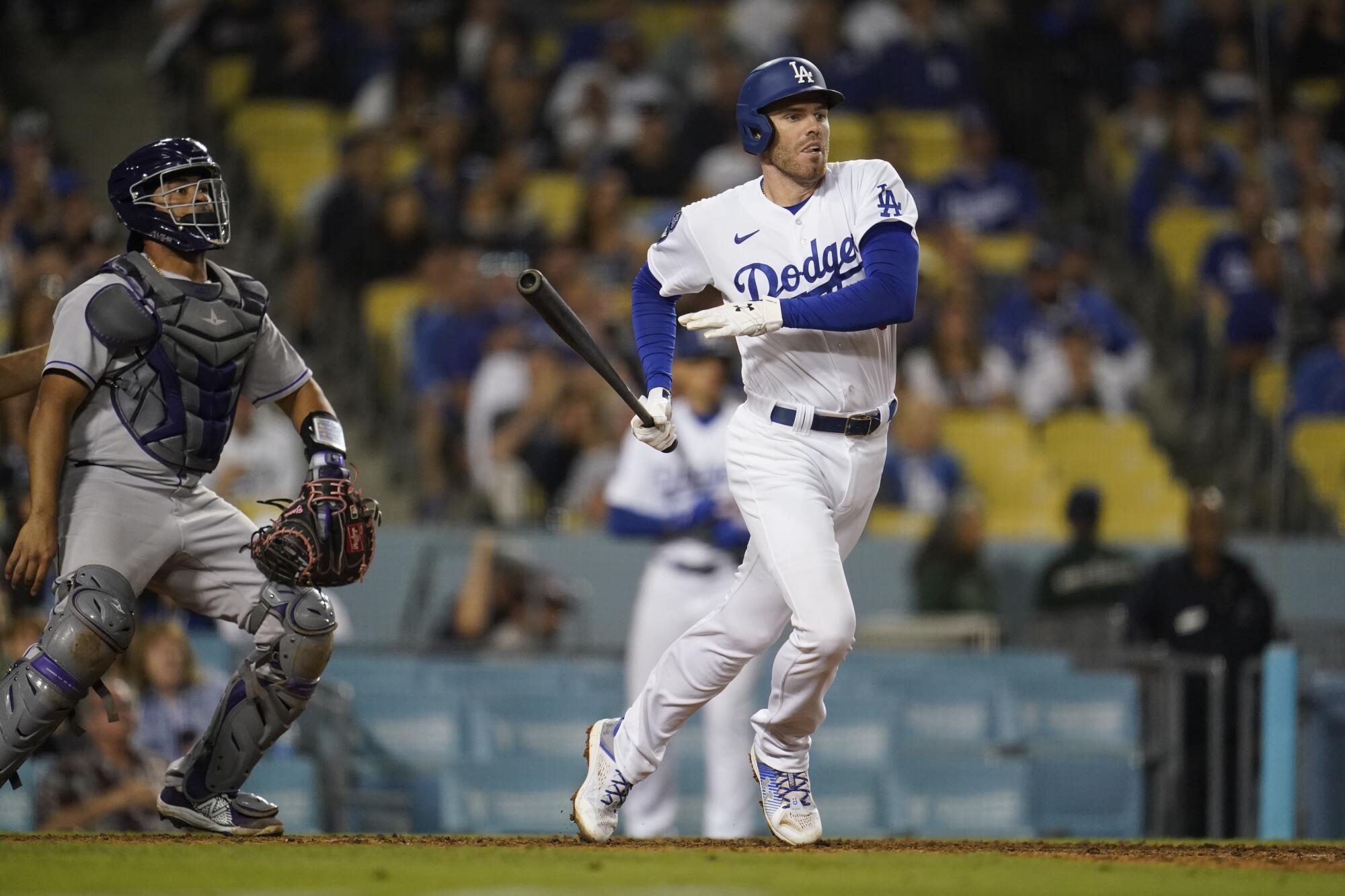
And though theyâve cooled off in recent weeks since clinching the division, they still finished first in the majors in on-base-plus-slugging percentage (.775), third in walk-to-strikeout ratio and fourth in batting average (.257).
They knew theyâd have talent this year, with Mookie Betts healthy again, Trea Turner embarking on his first full season with the team, and Freeman joining the mix as a $162-million offseason signing.
But they never could have imagined the bonds that have developed behind the scenes, a cross-lineup cooperative that has been â and, they hope, will continue to be this October â at the core of an offensive juggernaut.
âThis is my seventh year with this ballclub,â manager Dave Roberts said, âand this is the most communication that theyâve had internally amongst players.â
There are differing origin stories as to when the Dodgers evolved into the majorsâ most devastating lineup.
For the first two months of the season, they sped past opponents sometimes, but too often sputtered through frustrating quiet spells as well.
By mid-June, they were fifth in runs, but closer to league average in batting average, home runs and, most notably, hitting with runners in scoring position â an underwhelming start for one of the most expensive lineups in the majors.
âAt that point, it wasnât good,â Roberts said, recalling a series sweep against the San Francisco Giants in which the Dodgers scored four runs and went two for 24 with runners in scoring position. âIt wasnât team baseball. There was no urgency.â
âTeam baseballâ can be an abstract idea in a sport defined by individuality in each hitterâs swing, and predicated on individual battles in every at-bat.
And for a new-look Dodgers roster, it took even more time to figure out exactly what was missing.
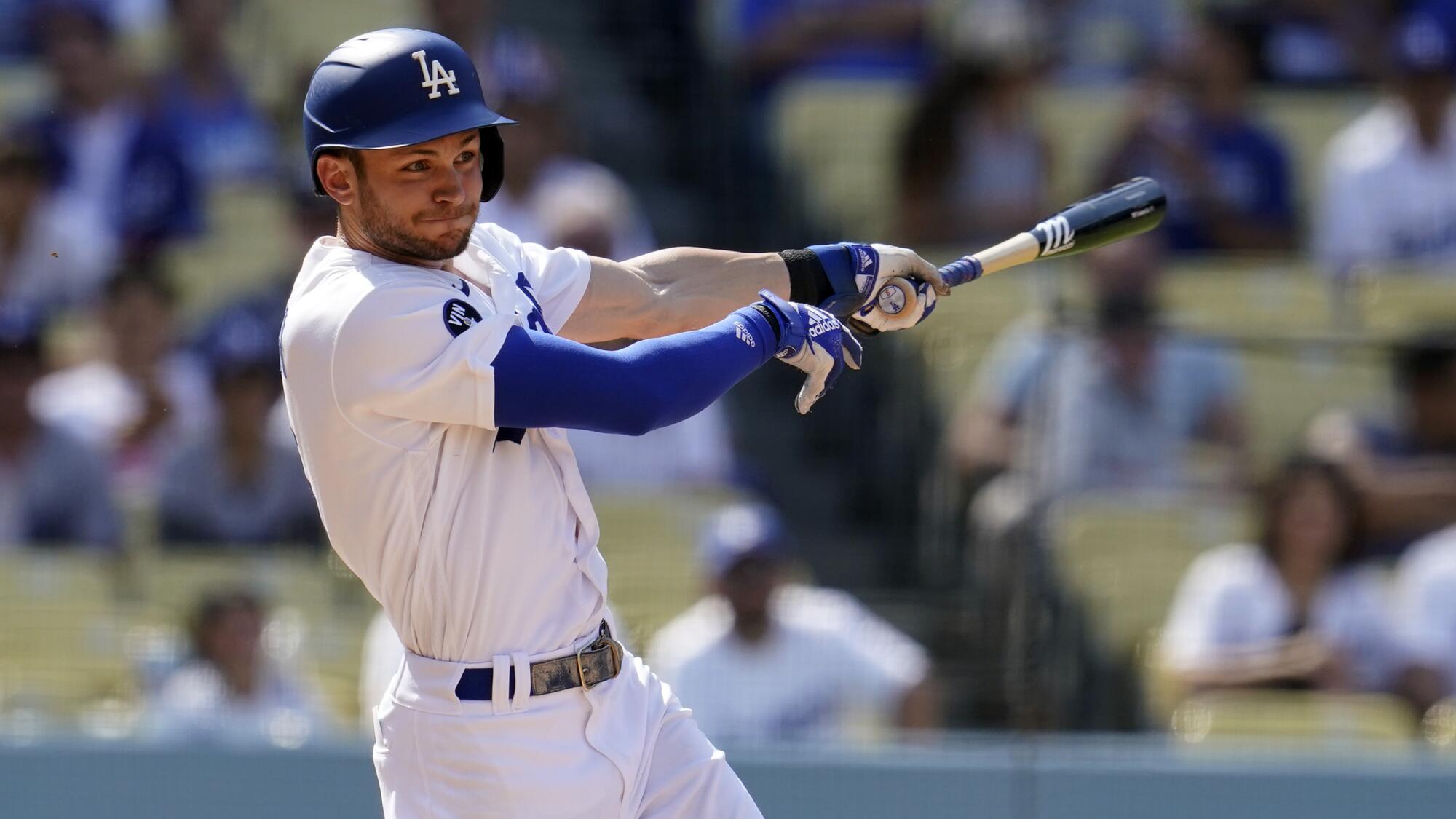
Freeman was brand new, in the process of changing organizations for the first time in his career. Trea Turner had only been with the Dodgers for the final two months of 2021, returning this year for his first full season with the organization. Even Betts had never experienced a truly normal season in Los Angeles, after his first two campaigns with the Dodgers were clouded by the pandemic.
Along with such veterans as Justin Turner and Muncy, they were the biggest voices in the room. But, 65 games into the season, they still werenât fully clicking, still not consistently operating on the same wavelength.
âOffense just doesnât take talented players to score,â Roberts said. âIt just doesnât happen like that.â
How it all changed is where their memories diverge.
Roberts recalled a hitterâs meeting in Cincinnati, before a three-game sweep against the Reds in which the Dodgers scored 26 runs and took a lead in the NL West standings they wouldnât relinquish.
The Dodgers have put together the greatest regular season in franchise history, so they need to accept the World Series expectations that come with it.
âGuys were kind of saying the right things,â Roberts said. âIt was good to see that the players themselves took it upon themselves to right the ship.â
Players recall the transformation being more subtle. Betts said there was a particular hitterâs meeting that stood out, in which âwe had a little talk on focusing on winning,â but couldnât remember exactly when.
Freeman failed to pinpoint any one moment, instead noticing a slower shift in mentality â and communication â among the group as the summer progressed.
âItâs been a running thing, reiterating what weâre trying to practice and our approach and game plan,â Freeman said. âBecause sometimes in this game, you get so self-absorbed about what your swing is doing, this and that. Sometimes, you just gotta look external.â
Once the Dodgersâ hitters started getting on the same page, it didnât take long for the results to follow.
There was a midseason change in early July, when the top three hitters in the lineup brainstormed a new batting order in which Trea Turner followed Betts in the leadoff spot, with Freeman batting third.
âItâs certainly hard to quantify, but I know the value of it,â Roberts said. âWhen you see three of your best players, having conversations about the order, the pitcher, team offense, everyone follows.â
There was a new routine in the dugout, a Freeman-suggested rule in which the team limited itself to two digital tablets on the bench during games, redirecting more of their attention to the action on the field and less on analyzing their swings between every trip to the plate.
âThis game is so analytically driven now and so iPady that, weâre trying to get eyes up,â Freeman said. âThereâs a lot of stuff you can learn from watching the game every single pitch. And over the course of the year, itâs gotten so good.â
And, of course, there was the organic transformation of their hitters meetings, with hitting coaches Brant Brown and Robert van Scoyoc, as well as assistant Aaron Bates, allowing the hitters to strategize among themselves before every game.
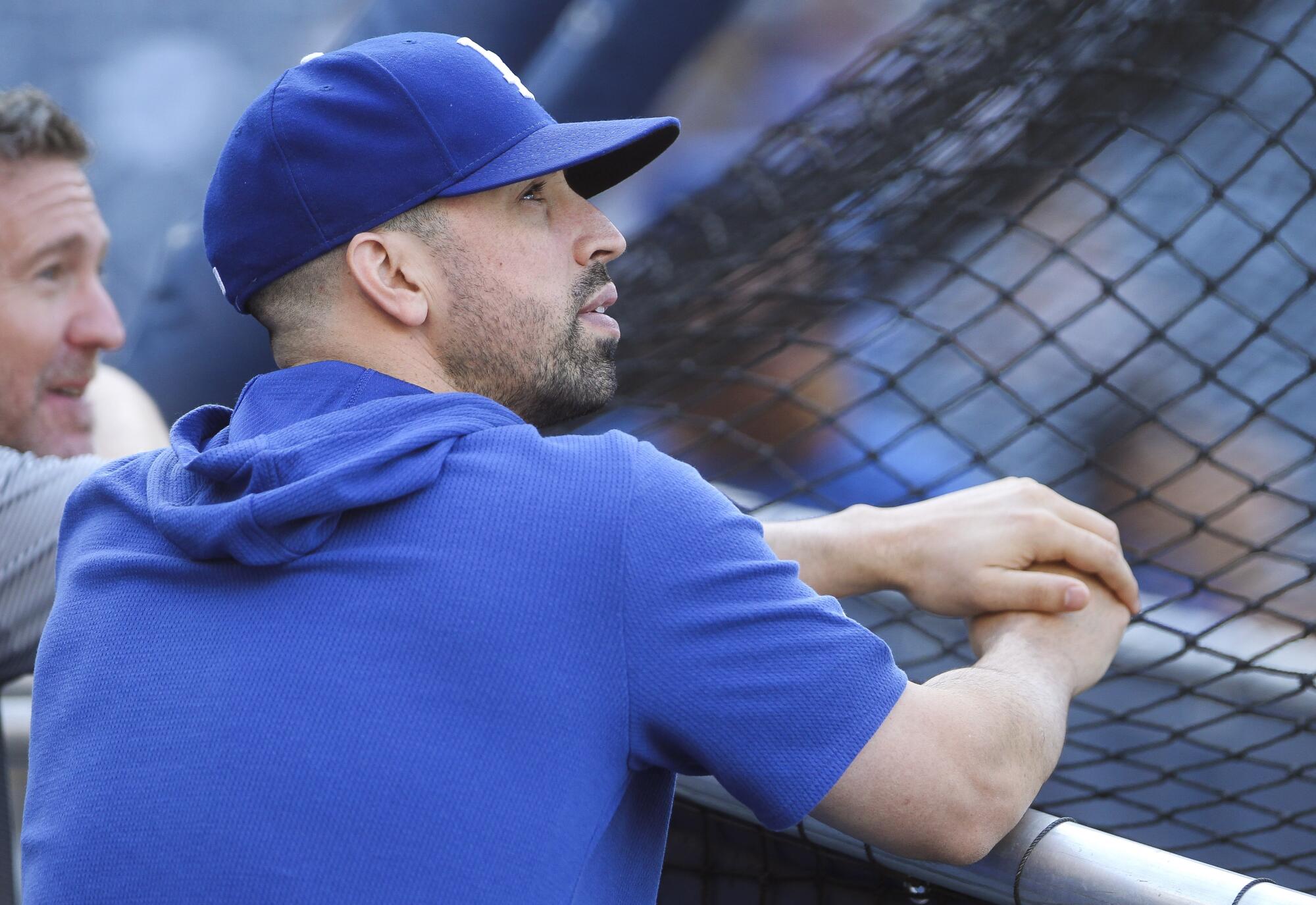
âI think Rob and Browny and Bates have done a good job of going around the room individually, talking to guys, and then we have our meetings, going around to every guy and having those conversations,â Justin Turner said. âI donât want to say theyâre making them verbalize what they want to do, but theyâre letting it be player-led.â
Justin Turner said in years past, the Dodgers usually only had a handful of players who would speak up in meetings. Rarely would they all share their exact game plans prior to first pitch.
The benefit of the new system?
âThereâs a lot of accountability to verbalizing what youâre seeing, what youâre thinking,â he said.
He then offered an example.
My son is 53. Heâs a baseball fan. He has Down syndrome. To him, baseball is more than a game.
âIf a guy goes up and swings at an 0-and-0 curveball, you can just come back and say, âOh, I was sitting on it,â â Turner said. âWhen you say it in the meeting â âHey, Iâm gonna look for 0-and-0 spin and put a good swing on itâ â and then you do it in the game, even if you roll over on it, all the guys are like, âHey man, good try. You executed your plan.â â
It becomes especially true whenever runners are in scoring position, where the Dodgers now lead the majors in average and OPS, a key catalyst behind their historic performance at the plate.
âYou can see it, guys are giving up at-bats to move guys over and get guys in and do the right things,â Muncy said. âItâs whatâs made our offense so good.â
It was a day like so many others for the Dodgers this year.
The only difference was the opponent.
Before a start against 2021 National League Cy Young Award winner Corbin Burnes in late August, Dodgers hitters walked into the batting cages pregame and were greeted by nearby TVs, each one flashing film of their previous performance against the Milwaukee Brewers right-hander from a week prior.
When they sat down for their pregame meetings, the hitters talked through their individual approaches, then came to agreement on a broader team game plan, deciding they needed to attack earlier in the count than they had in the prior matchup.
That night, they went out and executed to a tee, ambushing Burnes for seven runs over four innings in what became one of the best displays of their talent-rich lineup, and cohesive behind-the-scenes system, working as intended.
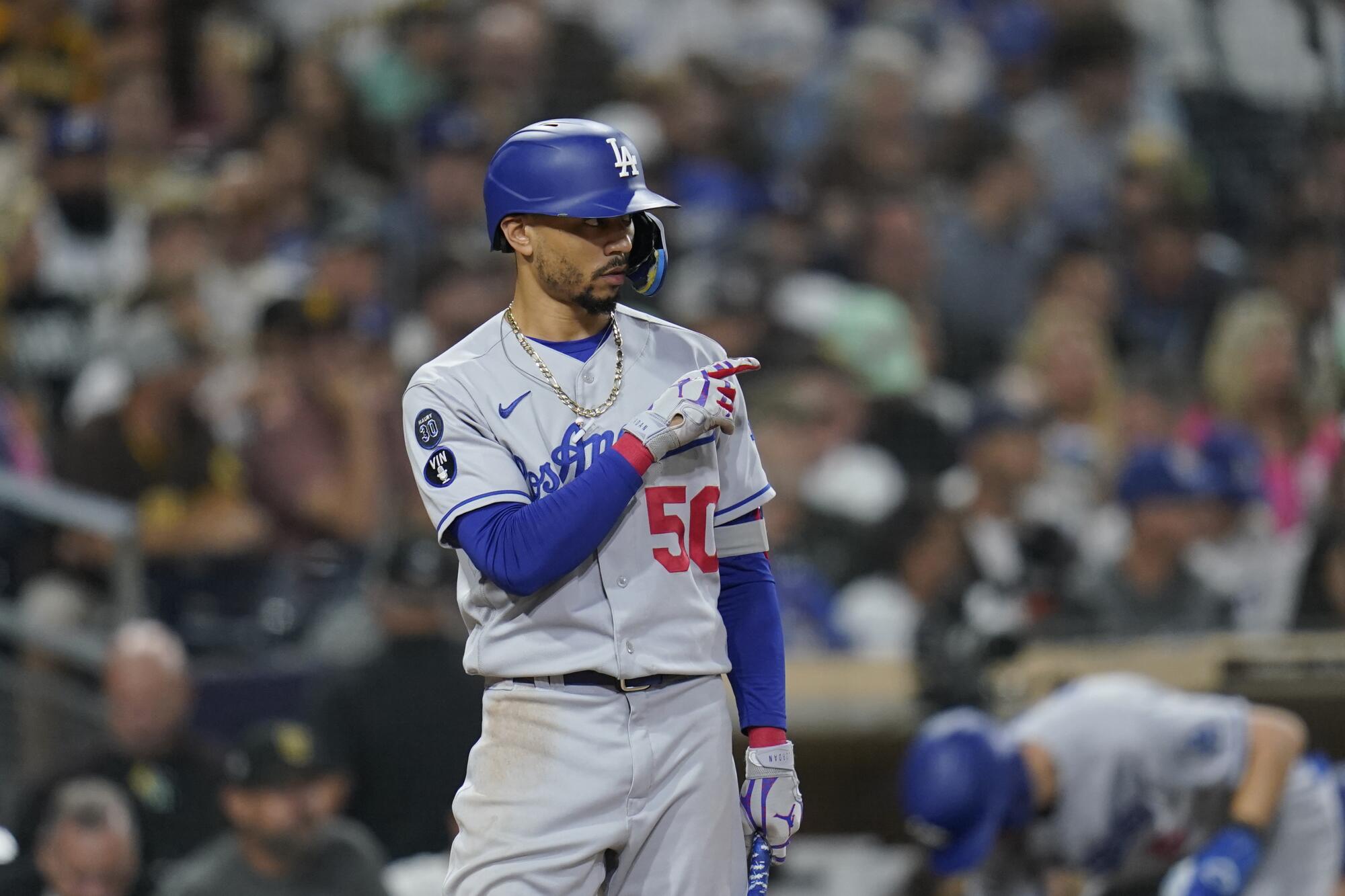
âSometimes you just forget to hang out with your teammates and talk,â Freeman said. âI think the thing that got us going, was the communication between us.â
Come the start of the division series next week, itâs what the Dodgers hope will continue to fuel their offense, as well.
The club has seen talented lineups falter in October before, with past teams becoming suddenly susceptible to a rash of strikeouts and untimely hitting once the intensity of the playoffs â and caliber of opponent â begins to kick in.
Itâs part of the reason why, despite winning 100-plus games in three of the last four full-length regular seasons, and finishing with a top-five scoring offense four years running, theyâve won only one World Series in recent memory. A lack of playoff offense has often been a familiar theme.
They believe this yearâs team is built to be different, however, buttressed by the foundational pillars built on and off the field over the winningest season in franchise history.
âIf you try to do everything yourself [all year], then you try to lean on someone in October, that doesnât work,â Freeman said, creating a hugging motion with his arms during a recent interview. âWhen you are leaning on someone on June 19, it creates an environment where weâre doing this as a whole and not just stuck in an iPad looking, looking, looking. You have to build it.â
Brown, in his fourth year helping run the offense, referenced the slogan the Dodgers printed across the back of their pregame workout T-shirts this year.
âNine is one,â he said. âOne is none.â
More to Read
Are you a true-blue fan?
Get our Dodgers Dugout newsletter for insights, news and much more.
You may occasionally receive promotional content from the Los Angeles Times.

